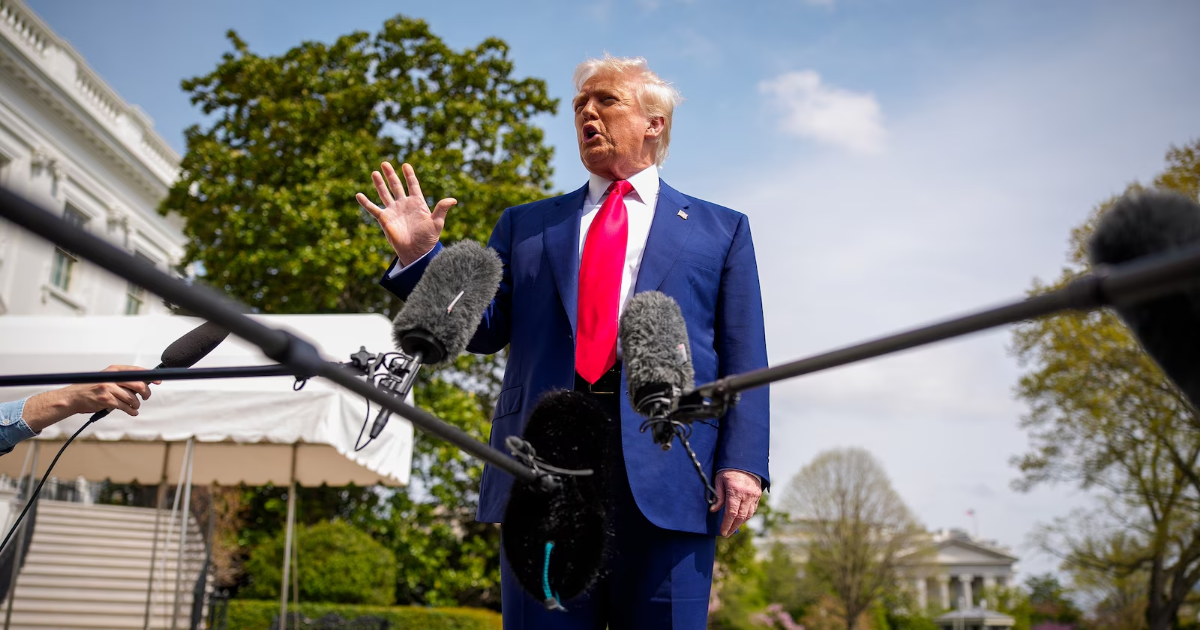Trump brushed off concerns about his policies prompting markets to plunge.
As markets nosedived and foreign allies recoiled after the unveiling of sweeping tariffs to be imposed by the U.S., President Donald Trump said he was looking toward the future impact of his levies.
In the case of manufacturing growth, a key administration interest in imposing a 10% levy on all trade partners and significantly higher tariffs on certain nations such as China, Trump said it could take years.
“Let’s say it’s a two-year process,” Trump said when asked by a reporter on Thursday how long it will take to get the industry where he wants to see it.
“You know, they start a plant, and they’re big plants We’re giving them approval to also, in many cases, to build the electric facility with it,” he continued. “So, you have electric generation and the plant, and they’re big plants. Now, the good news is a lot of money for them, and they can build them fast, but they’re still very big plants. I’d always say it would take a year-and-a-half to two years.”
Meanwhile, Trump brushed off concerns about the short-term pain economists expect to be passed on to American consumers.
“It’s to be expected where this is a patient that was very sick,” Trump said, comparing his economic policies to surgery.
“It’s going to be a booming country, a very booming country,” the president said.

President Donald Trump speaks to members of the media before boarding Marine One on the South Lawn of the White House on April 3, 2025 in Washington, DC.
Andrew Harnik/Getty Images
Trump’s tariff plan, announced in the White House Rose Garden on Wednesday, includes a baseline 10% tariff against all U.S. trade partners and steeper, more targeted levies against nations that place duties on U.S. imports.
Jay Timmons, the chief executive of the National Association of Manufacturers, released a statement on Wednesday night criticizing the rollout.
“Needless to say, today’s announcement was complicated, and manufacturers are scrambling to determine the exact implications for their operations,” Timmons said.
Timmons, who oversees the country’s largest manufacturing trade association, said the administration should instead make inputs that manufacturers use to produce products in the U.S. tariff-free and try to negotiate “zero-for-zero” tariffs for American-made goods in foreign markets.
“The stakes for manufacturers could not be higher,” he said. “Many manufacturers in the United States already operate with thin margins,” he added, and “the high costs of new tariffs threaten investment, jobs, supply chains and, in turn, America’s ability to outcompete other nations and lead as the preeminent manufacturing superpower.”
Fallout continued on Friday to Trump’s tariff plan. China hit back with retaliatory tariffs of their own: a 34% levy on all U.S. goods. Markets slipped further in early trading, after recording their worst day since June 2020 on Thursday.
Trump on Thursday signaled an openness to negotiation, despite White House officials throughout the day denying any chance of bargaining on the tariffs.
Then on Friday morning, Trump appeared to only double down, writing on his social media site: “MY POLICIES WILL NEVER CHANGE.”
